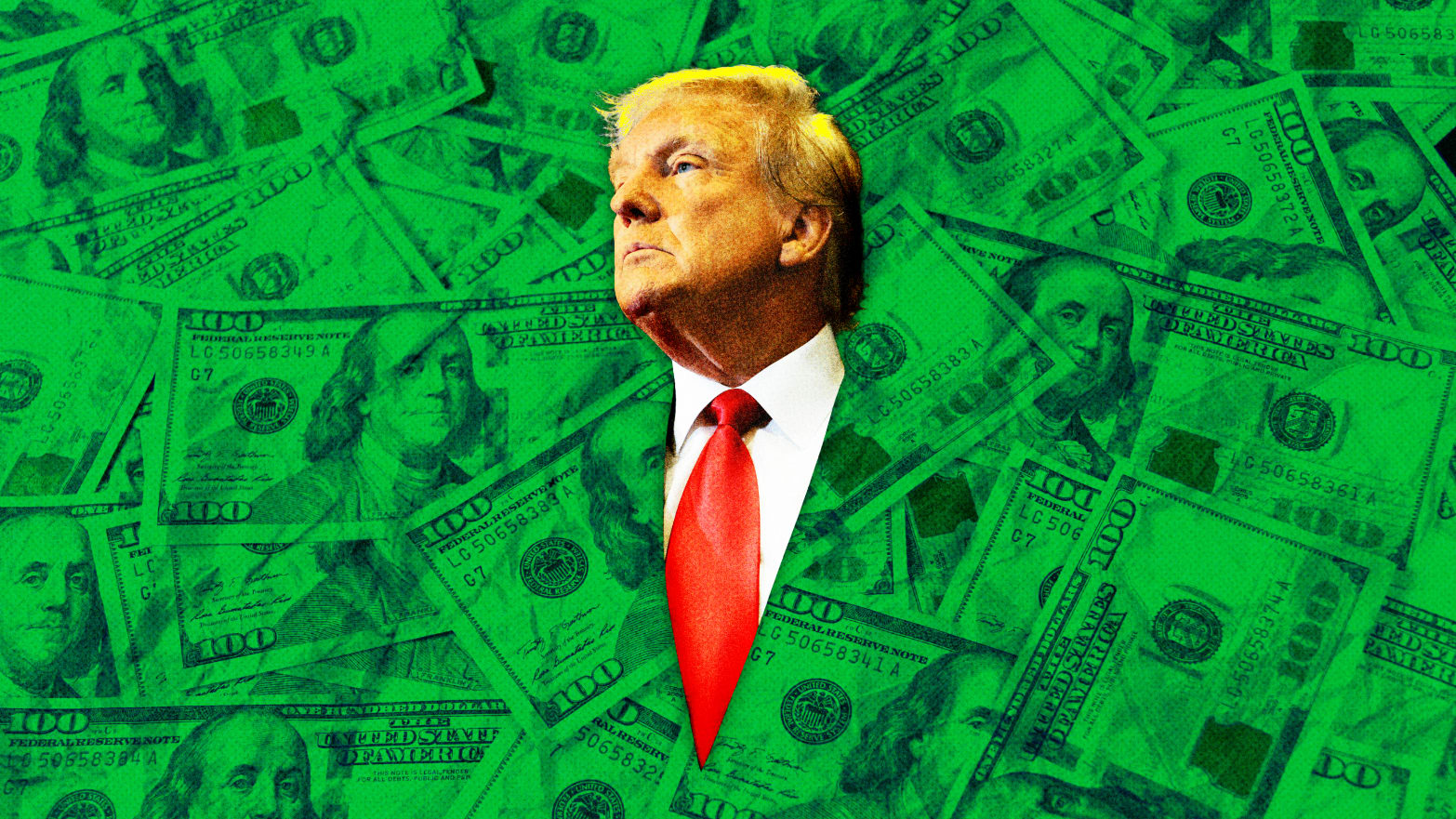
As Donald Trump’s legal challenges increasingly dominate his schedule, they are also draining his donors’ funds—and there’s a significant gap in the finances.
Trump’s “Save America” leadership political action committee disclosed on Tuesday that it only received $8,508 in donations from supporters throughout the entire month of January. However, the committee spent approximately $3.9 million during the same period, as indicated by a recent filing with the Federal Election Commission.
As Donald Trump’s legal challenges increasingly dominate his schedule, they are also draining his donors’ funds—and there’s a significant gap in the finances.
Trump’s “Save America” leadership political action committee disclosed on Tuesday that it only received $8,508 in donations from supporters throughout the entire month of January. However, the committee spent approximately $3.9 million during the same period, as indicated by a recent filing with the Federal Election Commission.
Nearly $3 million of the total spending was allocated for a single purpose: to cover legal fees.
Simultaneously, the Trump campaign itself disclosed a net loss exceeding $2.6 million for January. Despite raising approximately $8.8 million, the campaign expended around $11.5 million, according to a separate filing released on Tuesday.
These filings underscore Trump’s ongoing depletion of his donors’ funds as he contends with two significant financial burdens—exorbitant legal expenses stemming from numerous civil cases and four criminal indictments, along with the costs associated with a nationwide presidential campaign.
Following the release of Trump’s filings on Tuesday evening, his primary challenger, Nikki Haley, demonstrated notable strength, with her campaign reporting $11.5 million in receipts for the previous month. This marks the first fundraising period where Haley’s campaign surpassed Trump’s.
Despite minimal donations reported in January, the Save America PAC—established by Trump shortly after the 2020 election, ostensibly to support legal challenges—actually increased its bottom line by over $1 million, concluding the month with nearly $6.3 million in reserves.
However, this increase is not attributable to new donations but rather a $5 million transfer from another pro-Trump super PAC. This super PAC is in the process of refunding $60 million that the former president requested last year due to his legal expenses jeopardizing Save America, his legal fund, with bankruptcy.
The super PAC has been returning the refund in $5 million increments since last spring, but this emergency bailout is temporary—the complete refund is anticipated to be finalized by June.
Another indicator of Trump’s financial strain is evident in Save America’s bailout of yet another one of Trump’s PACs. In mid-January, Save America transferred $500,000 to his previous campaign committee, “Make America Great Again PAC,” which began the year with only around $570,000 in reserves. The injection from Save America to MAGA PAC suggests that MAGA PAC could also be facing financial difficulties.
A spokesperson for Trump did not immediately respond to a request for comment.
As he gears up for his third consecutive presidential campaign, Trump’s financial structure appears increasingly convoluted.
Currently, the Save America PAC primarily serves to cover the former president’s legal expenses, while he also needs to finance his political endeavors. To raise funds for his campaign, Trump relies heavily on a joint fundraising committee. According to the terms outlined in online solicitations, 90 percent of the proceeds are allocated to the campaign, with the remaining 10 percent directed to Save America.
However, in the latest filings, the joint fundraising committee did not allocate any funds to Save America last month. Instead, it transferred approximately $8.5 million to the Trump campaign. This indicates that Save America may still be due around $850,000 from January’s fundraising efforts—a relatively small amount compared to the substantial legal costs being incurred.
Trump’s financial strain comes at a critical juncture. In recent weeks, he has faced significant legal setbacks, including hefty judgments against him. Firstly, he was ordered to pay $83.3 million to writer E. Jean Carroll for allegations of sexual abuse and defamation. Shortly afterward, he was hit with a staggering $355 million fine for business fraud in New York. Including interest and other expenses, these rulings alone could amount to as much as $600 million.
While Trump is a billionaire, his decision to shift his legal burdens onto his supporters threatens to disrupt the GOP’s nationwide fundraising endeavors. Trump is currently vying for control of the Republican National Committee, strategically placing MAGA loyalists, and even his own daughter-in-law, in key positions of party leadership.
As per a previous report by The Daily Beast, this strategic maneuvering could significantly constrain the RNC as the national party grapples with uniting behind its embattled figurehead during a pivotal election cycle.
However, Trump’s ability to raise funds with the party hinges on him officially securing the nomination, a milestone that could be achieved as early as March. Despite the primary contest narrowing down to just Haley, a breakdown of the Trump campaign’s expenditures last month reveals the toll of the ongoing competition.
The campaign’s largest expense in January was nearly $4.7 million allocated for placed media, primarily for TV ad spending. Additionally, approximately $820,000 was spent on audiovisual support at events, $602,000 on video production, nearly $550,000 on travel-related expenses, and over $450,000 on polling services.
Furthermore, the campaign expended about $15,000 on teleprompter services, a notable increase compared to previous months, as Trump ramped up rally appearances to bolster support amid the commencement of primary voting. Apart from these direct political costs, the campaign’s most significant expenditure was the $830,000 dedicated to legal fees.